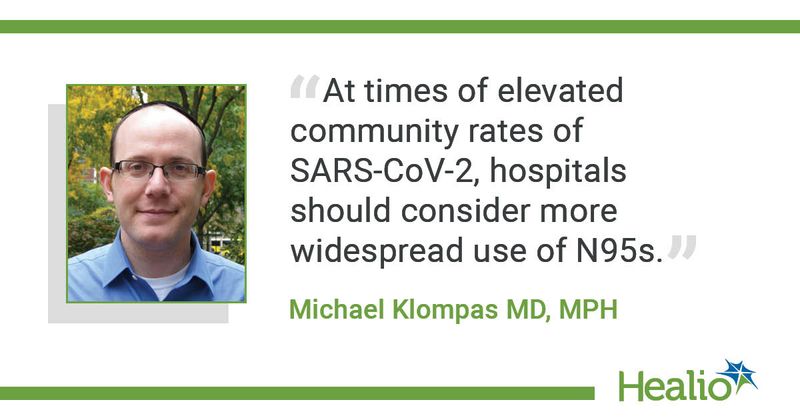Universal N95 use by HCWs in SARS-CoV-2 hot spots could lower nosocomial transmission
Because SARS-CoV-2 is most contagious before symptom onset, universal use of N95 respirators by health care providers in regions with high community infection rates could decrease nosocomial transmission, researchers argued.
“At times of elevated community rates of SARS-CoV-2, hospitals should consider more widespread use of N95s, including for the care of patients who are not known to have COVID-19 because they may be silent carriers of COVID-19 who can infect health care workers, or the health care worker may be a silent carrier who can infect patients and colleagues,” Michael Klompas, MD, MPH, professor of population medicine at Harvard Medical School and hospital epidemiologist at Brigham and Women’s Hospital in Boston, told Healio. “These considerations are most important in populations where vaccination rates are low.”

Writing in Clinical Infectious Diseases, Klompas and colleagues outlined three major reasons that N95 masks should be worn by health care workers caring for patients who do not have suspected or confirmed COVID-19 in areas of high community incidence.
The first reason, they said, is that SARS-CoV-2 infections are “generally more contagious” before and after symptom onset. Moreover, patients with confirmed or suspected COVID-19 are often managed according to strict safety protocols, causing providers caring for patients in non-COVID-19 wards to sometimes assume they are uninfected and be less particular about preventive measures like checking the fit of their masks. The final reason, they wrote, is that health care workers pose a “substantial risk” to patients without COVID-19 in non-COVID wards.
“Presymptomatic and asymptomatic patients and health care workers are responsible for most transmission within hospitals,” Klompas said. “Presymptomatic and asymptomatic patients can infect other patients and health care workers. Presymptomatic and asymptomatic health care workers can infect their patients and colleagues.”

